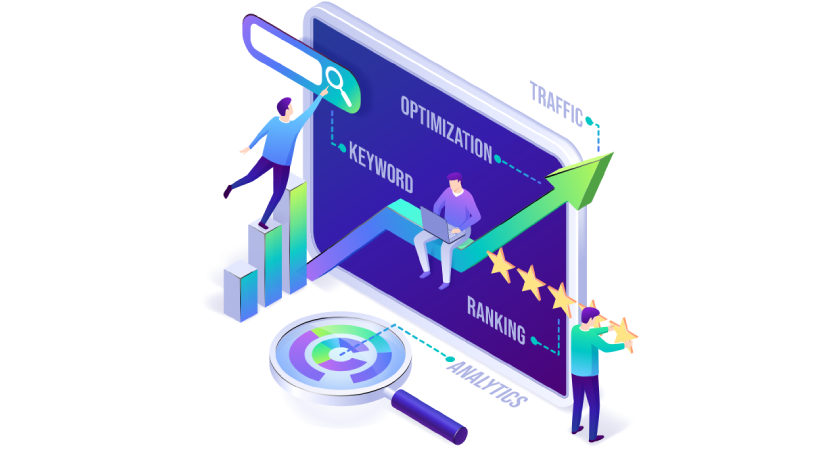
As a digital strategist, I’ve come to view an ecommerce site audit as a superhero of online store success. Just like Batman swooping in to save Gotham City, a thorough site audit can uncover hidden weaknesses and empower your online presence.
In this po, I’ll share the key components of a site audit, best practices for conducting one, and the common issues you may uncover. Get ready to optimize your site and unleash its full potential.
Key Takeaways
- Ecommerce site audits are important for identifying potential issues that hinder online business success and ensuring optimal site functionality and user experience.
- Key components of a site audit include technical analysis, content evaluation, and conversion rate optimization.
- Conducting a site audit involves assessing technical performance, evaluating website content, analyzing user experience, and using industry-standard tools and techniques.
- Common issues uncovered in ecommerce audits include slow loading times, complicated navigation, lack of mobile optimization, and broken links.
Importance of Ecommerce Site Audits
Ecommerce site audits are crucial for identifying and addressing any potential issues that may hinder the success of an online business. By conducting regular audits, businesses can ensure that their ecommerce site is functioning optimally and providing the best user experience for customers.
There are several benefits of performing ecommerce site audits. Firstly, audits allow businesses to identify any technical issues that may be affecting the site’s performance, such as slow loading times or broken links. By addressing these issues promptly, businesses can improve site speed and prevent potential customers from leaving due to frustration.
Secondly, audits help to identify any usability issues that may be hindering the conversion rate. By analyzing the user journey and identifying any areas of friction, businesses can make necessary changes to improve the overall user experience and increase conversions.
Performing an ecommerce site audit involves several steps. Firstly, businesses should analyze their site’s performance metrics, such as bounce rate, time on site, and conversion rate, to identify any areas of concern. Next, businesses should conduct a thorough review of their site’s design and layout, ensuring that it’s visually appealing and easy to navigate. Additionally, businesses should review their site’s content, ensuring that it’s engaging, informative, and optimized for search engines. Lastly, businesses should test their site’s functionality on different devices and browsers to ensure compatibility.
Key Components of a Site Audit
A comprehensive site audit includes several key components that are essential for evaluating the overall health and performance of an online business’s website.
- Technical Analysis: This component involves a thorough examination of the website’s technical aspects, such as page load speed, mobile responsiveness, and URL structure. By identifying any technical issues, the site audit ensures that the website is optimized for optimal user experience and search engine rankings.
- Content Evaluation: The content on a website plays a crucial role in attracting and engaging visitors. During a site audit, the quality and relevance of the content are assessed. This includes analyzing the use of keywords, the clarity of messaging, and the effectiveness of calls to action. By improving the content, businesses can enhance their online visibility and conversion rates.
- Conversion Rate Optimization: A site audit also focuses on identifying opportunities for improving the website’s conversion rate. This involves analyzing the user journey, optimizing landing pages, and enhancing the checkout process. By addressing any obstacles that may prevent visitors from completing desired actions, businesses can increase their online sales and revenue.
By conducting a thorough site audit, businesses can reap numerous benefits, including improved website performance, increased organic traffic, higher search engine rankings, enhanced user experience, and ultimately, higher conversions and revenue.
The site audit process is a valuable investment in the long-term success of an online business.
Best Practices for Conducting a Site Audit
To effectively conduct a site audit, it’s important to follow best practices for evaluating the overall health and performance of an online business’s website. Conducting a site audit brings numerous benefits to an ecommerce site. It helps identify areas of improvement, uncover technical issues, and enhance the user experience. A comprehensive site audit provides valuable insights into the website’s performance, allowing businesses to make data-driven decisions for optimization.
The site audit process typically involves several key steps. First, it’s essential to assess the website’s technical performance by examining page load times, mobile responsiveness, and site architecture. This helps identify any technical issues that may be affecting the site’s performance.
Next, analyzing the website’s content is crucial to ensure it’s relevant, engaging, and optimized for search engines. Additionally, evaluating the website’s user experience, including navigation, design, and accessibility, is vital to enhance customer satisfaction and drive conversions.
Using industry-standard tools and techniques, a site audit can uncover hidden issues and provide actionable recommendations for improvement. Regular site audits are essential to maintain a high-performing website and stay ahead of the competition. By following best practices and conducting thorough audits, businesses can optimize their online presence, enhance user satisfaction, and ultimately drive more revenue.
Common Issues Uncovered in Ecommerce Audits
During my site audits, I often uncover common issues that can negatively impact an ecommerce business’s performance. These issues can hinder ecommerce site performance and hinder user experience optimization. Here are three common issues that I frequently come across:
- Slow Loading Times:
One of the most common issues I encounter is slow loading times. Slow loading times can lead to high bounce rates, as impatient users will quickly leave a site that takes too long to load. To address this issue, it’s important to optimize images, minimize HTTP requests, and leverage browser caching. - Complicated Navigation:
Another common issue is complicated navigation. If users struggle to find what they’re looking for, they’re likely to abandon the site and look elsewhere. To improve navigation, it’s essential to have clear and intuitive menus, breadcrumbs, and search functionality. - Lack of Mobile Optimization:
With the increasing use of mobile devices for online shopping, it’s crucial to have a mobile-optimized site. Failure to do so can result in a poor user experience and lost sales. To optimize for mobile, ensure that the site is responsive, has easy-to-use touch elements, and loads quickly on mobile devices.
Implementing Recommendations for Site Optimization
I’ll implement the recommendations for site optimization. After conducting a thorough site audit and identifying the common issues affecting site performance and user experience, it’s time to take action and make the necessary improvements.
Ensuring that your ecommerce site is optimized is crucial for attracting and retaining customers, increasing conversions, and maximizing revenue.
First, let’s focus on site performance. One of the key recommendations is to optimize page load speed. Slow-loading pages can significantly impact user experience and lead to high bounce rates. To improve speed, consider compressing images, minifying CSS and JavaScript files, and leveraging browser caching. Additionally, ensure that your website is responsive and mobile-friendly, as more and more users are accessing ecommerce sites on their smartphones and tablets.
Next, let’s address user experience. One recommendation is to simplify the navigation and improve the overall site structure. Make sure that your categories and subcategories are logical and easy to navigate, and use breadcrumbs to help users understand their location within the site. Additionally, optimize your product pages by providing clear and concise product descriptions, high-quality images, and customer reviews.
Frequently Asked Questions
How Long Does It Typically Take to Conduct an Ecommerce Site Audit?
Typically, an ecommerce site audit takes a few weeks to complete. To estimate the duration accurately, one must consider the necessary qualifications, recommended tools, and the frequency of audits. Internal and external audits may vary in time requirements.
What Qualifications Should a Person Have to Conduct a Thorough Ecommerce Site Audit?
To conduct a thorough ecommerce site audit, one must possess the necessary qualifications and skills. These include expertise in web development, SEO, analytics, and a keen eye for user experience. Experience is key to ensuring a comprehensive and effective audit.
Are There Any Specific Tools or Software That Are Recommended for Conducting an Ecommerce Site Audit?
There are several recommended ecommerce site audit tools and software available. These tools can help analyze website performance, identify issues, and provide actionable insights for improving the overall ecommerce experience.
How Often Should an Ecommerce Site Audit Be Conducted?
An ecommerce site audit should be conducted regularly to ensure optimal performance. The frequency depends on the size and complexity of the site, but a general rule of thumb is every 6-12 months. Regular audits provide valuable insights and help identify areas for improvement, boosting conversion rates and revenue.
Is It Possible to Conduct an Ecommerce Site Audit Internally, or Is It Recommended to Hire an External Agency or Consultant?
It is possible to conduct an ecommerce site audit internally, but hiring an external agency or consultant is recommended. They bring expertise, objectivity, and fresh insights. Regular audits are important for identifying issues and optimizing performance.
Wrapping it up
In case it wasn’t already clear, conducting a thorough ecommerce site audit is crucial for optimizing your online store.
It’s like shining a spotlight on your website, revealing hidden issues and areas for improvement.
By carefully examining key components and following best practices, you can uncover common issues and implement recommendations to enhance your site’s performance.
Think of it as polishing your online store to attract more customers and boost your sales.


